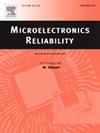Degradation mode analysis of Cu bond wires on Cu plated SiC power semiconductors stressed by active power cycling
IF 1.6
4区 工程技术
Q3 ENGINEERING, ELECTRICAL & ELECTRONIC
引用次数: 0
Abstract
Silicon carbide (SiC) is used as a new generation of power semiconductors to meet the increasing demands of modern electrified automotive powertrains. The state of the art involves Al-plated SiC semiconductors, which are bonded with Al bond wires. A known failure mode is the occurrence of cracks along the interface near the area between the Al bond foot and the Al metallization. In this study, an Al-free system with a fully copper-plated structure is used. The investigated SiC MOSFET is electroplated with Cu and contacted on top with Cu bond wires. The degradation mode of the copper bond wire as a topside contact for copper-plated SiC is to be analyzed, as limited results on the typical failure modes and mechanisms are available in the literature. The components are stressed in different configurations and measured by active power cycling tests. The investigations revealed different degradation modes depending on the degree of oxidation of the copper during the test. In the case of oxidation exclusion, the propagation and direction of cracks differ from the variant with strong oxidation. The experimental data of the oxidation-excluded variant are then analyzed using finite element simulation, focusing on the applied thermo-mechanical stress.
求助全文
约1分钟内获得全文
求助全文
来源期刊

Microelectronics Reliability
工程技术-工程:电子与电气
CiteScore
3.30
自引率
12.50%
发文量
342
审稿时长
68 days
期刊介绍:
Microelectronics Reliability, is dedicated to disseminating the latest research results and related information on the reliability of microelectronic devices, circuits and systems, from materials, process and manufacturing, to design, testing and operation. The coverage of the journal includes the following topics: measurement, understanding and analysis; evaluation and prediction; modelling and simulation; methodologies and mitigation. Papers which combine reliability with other important areas of microelectronics engineering, such as design, fabrication, integration, testing, and field operation will also be welcome, and practical papers reporting case studies in the field and specific application domains are particularly encouraged.
Most accepted papers will be published as Research Papers, describing significant advances and completed work. Papers reviewing important developing topics of general interest may be accepted for publication as Review Papers. Urgent communications of a more preliminary nature and short reports on completed practical work of current interest may be considered for publication as Research Notes. All contributions are subject to peer review by leading experts in the field.
 求助内容:
求助内容: 应助结果提醒方式:
应助结果提醒方式:


